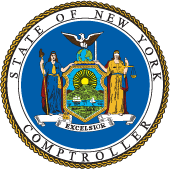Objective
To assess the extent of implementation of the three recommendations included in our initial audit report, Medicaid Program – Reducing Medicaid Costs for Recipients Who Are Eligible for Medicare (Report 2021-S-16).
About the Program
DOH administers the State’s Medicaid program. Individuals who are eligible or appear eligible for Medicare are required to apply for Medicare as a condition of receiving Medicaid. When Medicaid recipients are also enrolled in Medicare, Medicare becomes the primary payer and Medicaid the secondary. As a secondary payer, rather than pay for the medical service itself, Medicaid can pay a recipient’s Medicare premiums, deductibles, and coinsurance amounts, which allows for a significant cost avoidance for the Medicaid program. Local Departments of Social Services (Local Districts) are required to identify Medicaid recipients who are at least 65 years of age, or will be turning age 65 within a 3-month time frame, and have them apply for Medicare. The Social Security Administration (SSA) determines Medicare eligibility and enrolls individuals. SSA also administers the Supplemental Security Income (SSI) program, a federal cash benefit to assist low-income individuals. In New York, all SSI recipients are eligible to receive Medicaid. When SSA receives an SSI application for someone who is 65 years of age, it also checks the individual’s Medicare eligibility and enrolls eligible individuals.
The requirement to apply for Medicare as a condition of Medicaid eligibility had been temporarily suspended by the Centers for Medicare & Medicaid Services in response to the COVID-19 public health emergency. The State was required to restart this process and issue Medicaid redetermination notices for Medicaid renewals effective July 2023 and complete the renewals by December 2025.
The objective of our initial audit, issued on September 14, 2023, was to determine whether DOH took sufficient steps to control the Medicaid costs of recipients who were eligible for Medicare based on age but were not enrolled in Medicare. The audit covered the period from July 2016 through June 2021. We found DOH had not taken sufficient steps to effectively control the Medicaid costs of recipients who appeared eligible for Medicare based on their age. For the audit period, we identified 13,318 Medicaid recipients who appeared eligible for Medicare based on age but were not enrolled in Medicare. Medicaid could have potentially saved $294.4 million on behalf of these recipients for clinic, inpatient, and practitioner claims that could have been covered by Medicare as the primary payer. Although DOH issued guidance to Local Districts regarding the requirement for Medicaid recipients reaching age 65 to apply for Medicare, we found DOH did not ensure Local Districts complied. Also, DOH did not require Local Districts to have Medicaid recipients with SSI apply for Medicare because, according to DOH officials, SSA already performed Medicare eligibility checks. However, according to SSA officials, a recipient may not receive Medicare if, for example, the individual provides SSA insufficient information.
Key Finding
DOH officials made little progress in addressing the problems identified in the initial audit report, and additional actions are needed. At the time of our follow-up, DOH had not fully resumed the requirement for individuals over 65 to provide proof of Medicare application. Additionally, DOH officials had not worked with Local Districts to develop and implement new procedures to ensure recipient information on file is correct and all recipients are asked to apply for Medicare. Since the initial audit, we determined Medicaid could have potentially saved $190.3 million on behalf of 17,818 recipients for clinic, inpatient, and practitioner claims that could have been covered by Medicare as the primary payer if they were enrolled in Medicare when they first became eligible at age 65. Of the initial report’s three audit recommendations, one was implemented, one was partially implemented, and one was not implemented.
Key Recommendation
DOH officials are requested, but not required, to provide information about any actions planned to address the unresolved issues discussed in this follow-up within 30 days of the report’s issuance.
Christopher J. Morris
State Government Accountability Contact Information:
Audit Director: Christopher J. Morris
Phone: (518) 474-3271; Email: [email protected]
Address: Office of the State Comptroller; Division of State Government Accountability; 110 State Street, 11th Floor; Albany, NY 12236
